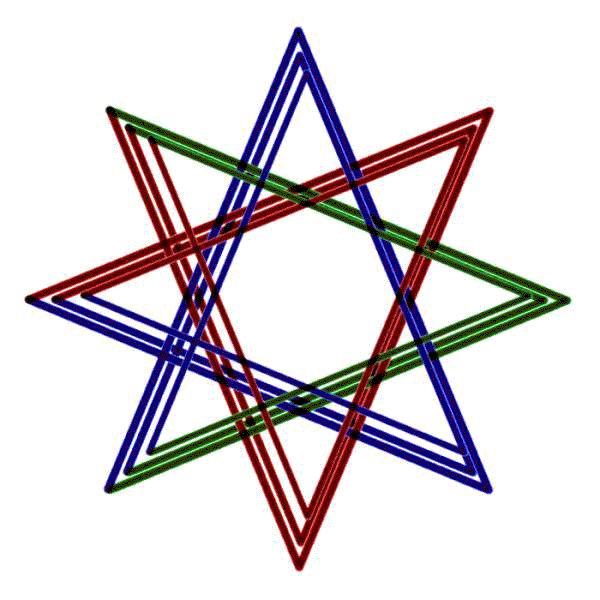|
The
Matrix Code
EWK
5/04/04, Degree of Lucidity: Fully Lucid. "Inside
a school environment, I leave a classroom and walk down a corridor. I
realize that I dream and remember my task to try to see "the matrix
code" possibly embedded behind the surface appearance of dreams. I
try to use a memorized incantation: "By the power of Alkahest / Let
the Matrix Code visibly manifest!" I find the chant hard to
remember the first time through, and verbally sort of stumble through
it. On my second attempt I remember it clearly and chant it fairly
smoothly, with better kavanah. (focused intent and alignment).
Afterwards I notice that the dream environment and objects look
different, but still not code like shapes. The dream scene
dissolves into a sort of gray void, and I feel myself waking up. I hold
onto the kinesthetics to stay in the dream, and the dream scene
reappears. I encounter a short fit man who looks in his thirties. He
identifies himself as "Bruce Lee", and tells me had not really
died. I doubt his claim, as he looks Caucasian not Asian, but for fun I
challenge him to spar, shouting "Matrix moves!" as we begin,
remembering the martial arts scene from the movie. I block his attack
easily, and retaliate with a side kick. (I briefly wake up in physical
reality, having physically kicked the covers. But I don't move,
and almost immediately fall asleep and back into the lucid
dream.)
I follow [Bruce Lee] down a corridor. I decide to try a simpler approach
to accomplishing this task, and simply chant "See the Matrix!"
again and again. The dream scene begins to fade to gray again, but I
stay in the dream by focusing on the kinesthetic sensation of a object I
hold in my hand. My vision clears, and now I see myself in what looks
like a small town movie set, false front houses, pastel colors, a
simpler less detailed simulation. It comes more into focus and resolves
into a small rural town set. I see a few houses, a trailer, and a small
general store style post office, missing the street side wall. On the
gray post office box wall inside the post office I see a "just
married" sign, black letters on white. Across the street a see a
large star sign on a white background. It looks strange, chaotic, hard
to resolve or focus on. The star has eight, or perhaps ten points. The
octagonal(?) star has multiple lines, three or more, slightly offset,
and in different colors for different sections, dark green , dark blue,
dark red, perhaps some brown. A "man" dressed in white comes
out of the "post office" carrying a tool box. He has on a
white cap - I really only see man shaped clothes, moving without a body.
On the white clothes in stark contrast I see lines of small black
letters and numbers, covering about 5% of the surface. Dream matrix
code? I try to ask the "man" for information, but when I do so
"he" falls apart, leaving only a pile of clothing. I look in
the white canvas tool bag, and remove a "white washcloth" with
a line of black code on it. I get the impression of small black numbers
and letters, but do not, or can not, look at them closely enough to
recognize them or identify them. RWPR".
COMMENT:
I created this dream task as a way of possibly exploring the possibility
of a non-sensory information universe. Some have speculated that at
the deepest level, we input the universe primarily as code, an
information pattern, a code that we learn to habitually translate and
then experience in terms of sight, sound, touch, etc. Your computer does
this in a simple way when it translates a stream of binary code
information - a pattern of 0 and 1’s - into an animated visual display
on your computer screen. We as humans do something very similar when we
read an engaging story, where the text presents us with an arrangement
of arbitrary shapes (letters and numbers ) arranged in a meaningful
pattern that we ignore as such while reading, instead
experiencing people, places and situations instead. Some believe that a
similar situation might also applies to our waking and dreaming lives.
Cypher described this possible situation
pretty entertainingly in first "Matrix" movie:
"But there's way too much information to decode the matrix. You get
used to it. I don't even see the code. All I see is Blonde, Brunette,
Redhead . . ."
In "The Matrix Code' graphic I did my best to reproduce the
"chaotic star" symbol that showed up towards the end of the
dream, as it certainly seemed the most significant and strange thing
that showed up after I did my chant. I feel I succeeded fairly well. In
the dream, I felt that it symbolized the matrix code as a whole - it
belonged to a different order of existence than did anything else that I
experienced in the dreamscape. Just looking at the graphic gives
me a weird unsettled feeling, as if I look at something
"not right", that does not properly belong in either the
waking or the dreaming world.
|
![]() COMPUTER
GRAPHICS
COMPUTER
GRAPHICS